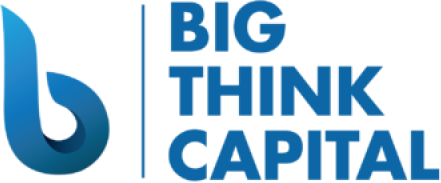Navigating the Rising Tide: A Comprehensive Guide to Adjusting Small Business Financial Strategies Amid Rising Federal Interest Rates and Inflation Trends
Estimated Reading Time: 6 minutes
- Understand the impact of rising federal interest rates on borrowing costs and cash flow.
- Explore refinancing options to stabilize financial outlook.
- Implement risk management to mitigate market fluctuations.
- Consider alternative lending options like MCAs and SBA loans.
- Adjust business models for flexibility and growth.
Table of Contents
- Understanding the Current Financial Landscape
- The Impact of Rising Interest Rates on Small Business Operations
- Strategies to Navigate Rising Interest Rates
- The Role of Alternative Lending Options
- Conclusion
- FAQ
Understanding the Current Financial Landscape
In the wake of the Federal Reserve’s monetary policy adjustments, interest rates have reached levels not seen in years. According to recent data from the Federal Reserve, the benchmark interest rate has been adjusted multiple times to combat rising inflation, which has hovered around 4-5% year-over-year. This situation creates an environment of uncertainty for small business owners, affecting everything from loan repayment to investment decisions.
Key Trends Impacting Small Businesses
- Increased Borrowing Costs: As interest rates rise, the cost of borrowing also increases. This means higher monthly payments for existing loans and more expensive terms for new financing.
- Inflation Pressures: With inflation continuing to drive the cost of goods and labor higher, small businesses must find ways to manage escalating expenses while maintaining profitability.
- Changing Consumer Behavior: Higher prices can lead to changes in consumer behavior. Customers may reduce spending or prioritize essential purchases, impacting sales revenue for small businesses.
The Impact of Rising Interest Rates on Small Business Operations
Rising interest rates directly influence various aspects of small business operations. Here are some critical areas affected:
1. Loan Repayment
If your business has existing loans, increased interest rates can result in higher monthly payments. This can strain cash flow, making it essential to reassess your budget and expenditure.
2. New Financing
For businesses looking to secure new financing, rising interest rates translate into higher costs. Lenders may tighten their requirements, making it important to present a strong financial profile when applying for loans.
3. Investment Decisions
Business expansion plans, such as investing in new equipment or technology, may be delayed due to the higher cost of financing. This can stall growth opportunities and hinder competitiveness.
Strategies to Navigate Rising Interest Rates
To effectively navigate these challenges, small business owners can implement a variety of strategies. Here are some practical takeaways:
Refinance Existing Loans
Refinancing existing debt could be a viable option. By securing a loan at a lower fixed interest rate before further rate hikes, businesses can stabilize their financial outlook. Here are some steps to consider:
- Evaluate Current Debt: Review existing loans and consider which ones have high interest rates.
- Research Options: Explore various refinancing options to find the best rates and terms available.
- Consult a Financial Advisor: Seek guidance from a funding expert to evaluate the potential benefits of refinancing.
Implement Risk Management Practices
In times of rising interest rates and inflation, it’s vital for businesses to have risk management strategies in place. Consider the following approaches:
- Diversify Revenue Streams: Expand your product offerings or service lines to mitigate risks associated with market fluctuations.
- Build an Emergency Fund: Ensure you have reserves to cover unexpected costs or shortfalls in revenue.
- Regularly Monitor Financial Performance: Keep a close eye on cash flow and key performance indicators (KPIs) to make timely adjustments.
Adjust Business Models
Flexibility in operations can allow businesses to adapt to changing economic conditions. Here are some adjustments to consider:
- Embrace Technology: Invest in technology solutions that streamline operations and reduce costs. For example, adopting e-commerce or digital marketing strategies can widen your customer base.
- Optimize Pricing Strategies: Review pricing models to ensure they reflect current market conditions while remaining competitive.
- Enhance Customer Experience: Focus on retaining customers through exceptional service and loyalty programs.
The Role of Alternative Lending Options
In a tightening credit environment, alternative lending options can provide a lifeline for small businesses. Here are several alternatives to traditional financing:
Merchant Cash Advances (MCA)
While an MCA is not a loan, it provides businesses with cash advances based on future credit card sales. This option offers quick access to funds without strict credit requirements, making it suitable for businesses experiencing cash flow challenges.
SBA Loans
The U.S. Small Business Administration (SBA) offers various loan programs to assist small businesses in accessing tailored funding solutions. These loans often come with lower interest rates and longer repayment terms, helping businesses manage costs in an inflated economy.
Equipment Financing
If your business needs to invest in new equipment, consider pursuing equipment financing. This allows you to spread the cost of essential equipment over time while retaining working capital.
Conclusion
The rising federal interest rates and ongoing inflation present unique challenges for small businesses in 2025. However, by understanding these trends and implementing strategic adjustments, businesses can not only weather the storm but position themselves for growth.
Whether you choose to refinance loans, adjust your business model, or explore alternative lending options, staying proactive is key. Remember, the decisions you make today can have lasting impacts on your business’s future.
To further discuss how to navigate these financial challenges or to explore funding options that best suit your needs, we invite you to learn more at bigthinkcapital.com or reach out to a funding expert. Your business deserves the support and resources needed to thrive, even in a changing economic landscape.
FAQ
What should a small business do first in a rising interest rate environment?
The first step is to reassess your current financial situation, including evaluating existing loans and considering refinancing options to mitigate increased costs.
Are there specific industries more affected by rising interest rates?
Industries that rely heavily on debt financing, such as construction and manufacturing, tend to be more affected by rising interest rates.
How can businesses manage inflation costs?
Businesses can manage inflation costs by optimizing pricing strategies, reducing unnecessary expenditures, and improving operational efficiencies.






